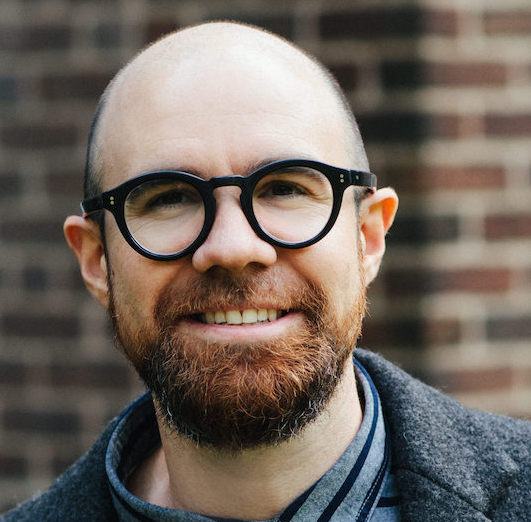New Journalism. Crónica. Creative nonfiction. Whatever you call it, and whatever labels we continue to conjure up to describe a genre that has been around in one form or another for a very long time, the genre occupies an in-between space, with one foot in the world of journalism and another in fiction. Despite its association with the 1960s, some have suggested writers such as Defoe and Twain as progenitors of the form in its Anglophone variety.
On these coasts, the early giants include Gay Talese (“Frank Sinatra Has a Cold” has become a staple in journalism programs not only in the States, but abroad), and today Jon Lee Anderson is just one of the better-known writers in this august tradition. More recently, longform journalism has evolved to point of being taught in many MFA programs throughout the US. In Latin America, the tradition of the crónica in a form we would recognize stretches back at least to Cuban writer and revolutionary José Marti. During his stint living in New York between 1881 and 1895, he composed more than 175 such texts as part of the series “North American Scenes.” (If, given the season, you’re interested in seeing how the Coney Island of today differs from that of the 1880s, you might start with the Martí crónica that takes its name from the neighborhood, in Esther Allen’s marvelous translation.) At the turn of the twentieth century, there was Paulo Barreto, better known as João do Rio, “the cronista of Rio’s soul.” (“The street,” he wrote in his most famous text, “is the eternal image of innocence”—and the flâneur turned cronista, he continues, the eternal innocent.) More than a half-century later, Gabriel García Márquez’s 1955 text on Hiroshima revisited the bombing of the Japanese city through the eyes of a Spanish priest: “The first encounter Padre Arrupe had with victims of the catastrophe was when he saw three young women clinging to one another, their bodies turned to raw flesh, emerge from the rubble. It was then he understood that this had been no ordinary fire.”
Today, to our great fortune, there are still magazines throughout Latin America dedicated to the form: among them, Etiqueta Negra in Peru and Piauí in Brazil. And, of course, there are the cronistas themselves, nudging the form forward, ensuring its endurance into the twenty-first century.
Among them is Julio Villanueva Chang, founding editor of Peru’s Etiqueta Negra—a magazine often described as the Peruvian New Yorker. Chang has been writing profiles for over two decades, and he has earned an Inter American Press Association prize for his work. Over the years, Chang has garnered his share of admirers: “The profile is the subgenre in which, within the tradition of the crónica, Julio Villanueva Chang is a master,” the great Mexican writer Juan Villoro has said, drawing comparisons between Chang and García Márquez during his days as a cronista in Barranquilla and Cartagena, Colombia. In this issue, Chang takes readers to Tres Cruces, Uruguay’s main bus terminal, located in the country’s capital, Montevideo. There, he plumbs the seemingly innocuous routine of the commuter station, creating a memorable portrait of the people who define and who are defined by Tres Cruces, in a translation by Sophie Hughes.
Brazilian journalist Eliane Brum is no less spectacular in lending voice and visibility to those hiding in plain sight—or, in the case of her piece in this month’s magazine, those “hiding” in the midst of the rainforest: midwives who have brought generations of children into the world and into rural Brazil. In two decades of reporting, Brum has won over forty national and international awards, among them the Premio Rey de España and the Inter American Associated Press Award. In 2008, she received the United Nations Special Press Trophy. “The Forest of Midwives,” translated by Julia Sanches, is emblematic of Brum’s knack for immersing readers in the singular atmospheres she conjures.
Our youngest practitioner of the crónica form comes from Guatemala. His name, Arnoldo Gálvez Suárez. A journalist and writer, he has published two novels—Los Jueces and Puente Adentro—and a short story collection. His first novel earned him the XI Mario Monteforte Toledo Prize for Fiction, and his second won the III BAM Letras Prize for Fiction in 2015. Here, in Geoff Bendeck’s translation, Suárez brings us a story of urban Guatemala through its taxi drivers. Rather than trail them on their routes, Suárez is interested in where his subjects don’t go.
Though a modest sample of the possibilities and elasticity of the nueva crónica latinoamericana, New Journalism, or whatever label you choose to apply, the writers in this month’s feature provide assurance that the genre is source of some of today’s most vibrant and compelling stories, fictional or otherwise. If the past is any guide, we have no reason to believe that the future of the form is also assured.
© 2017 by Eric M. B. Becker. All rights reserved.










